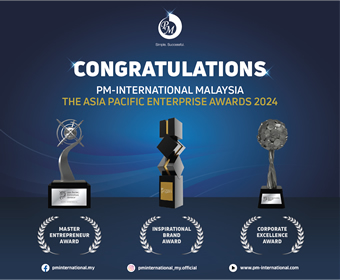Asia is one of the most important components of the global supply chain and experienced significant disruptions during Covid-19. A combination of a challenging export environment, rising inflation, increased wages, higher energy prices, labour shortage, and adverse weather are all having an impact on the region’s supply chain environment.
During the pandemic, the robustness of supply chains was tested – for example, firms had to navigate Covid protocols and take on unusual risks such as vaccine transportation, in relation to freeze drying or containers needing to be kept at a certain temperature; the global semiconductor shortage magnified by the ‘stay-at-home economy’; and the Suez Canal incident in March 2021, which blocked one of the world’s busiest shipping lanes.
The pandemic exposed vulnerabilities in the global supply chain. A more obvious one being the world’s reliance on China’s manufacturing capabilities. Since then, some companies have felt the need to diversify and tried to move part of their manufacturing bases to other Asian economies such as India, Vietnam and Malaysia.
For example, Apple decided to partially produce MacBooks in Vietnam and iPhones in India. Production has already started in India with output expected to triple over the next two years, while production in Vietnam is slated to begin in May 2023.
Supply chain management is inherently complex, especially in an age of increasing geopolitical and financial uncertainty. While risk managers have been historic champions of supply chain risk management, it is now increasingly central to the needs of the procurement, operations and distribution teams.
To support business needs in better managing the risks in their supply chain in a cost-effective and sustainable way, QBE Insurance Asia has released the “Building Supply Chain Resilience” report.
“As economies open up post-Covid, companies have had to react to changes in supply and demand, also affected by the present economic outlook. We understand the crucial role that effective risk management plays in all organisations and work hard to understand our customers’ businesses so that we offer insurance solutions that minimise their risk exposures while simultaneously building up their business resilience and sustainability,” said Lei Yu, North Asia CEO for QBE Insurance.
“A part of this solution is the ability to identify PESTEL risks, which is aimed at helping companies to manage their supply chain risks.”
PESTEL risks include Political e.g. the Russia-Ukraine war, Economic e.g. GDP outlook that impacts trade flows, Social e.g. demands for higher wages, Technological e.g. cyber-attacks, the use of blockchain in shipping, Environmental e.g. major oil spills, and Legal e.g. trying to meet environmental targets through the type of fuel used.
Understanding supply chain risks
Risks need to be managed carefully across the supply chain. Companies should work as closely as possible with their insurers to navigate a complex global ecosystem across different geographies.
For example, Hong Kong is a global shipping hub, so freight and logistics are key risks. Falling exports, rising inflation, higher wages, a shortage of labour and adverse weather such as typhoons also add to supply chain risks.
Singapore’s supply chain is heavily dependent on imports and the smooth running of global trade. The nation is reliant on China for the imports of electronics, machinery, and metals for construction and manufacturing. Other risks include cyber-attacks as digitalisation increases.
Rama Chandran, Asia Head, Underwriting, Marine, QBE Insurance, commented: “Digitalisation is an important accelerator in supply chain operation, but it doesn’t change physical delivery. Firms can order supplies and track them electronically, but in most cases these goods still need to be physically delivered. Digital tools help in managing and understanding supply chains, but don’t eliminate the fundamental risk drivers.”
Checklist to minimise exposure:
- Open communication lines with suppliers: An active dialogue with suppliers is the best defence for unexpected shocks to the network. Whether this is informal or systematic, such information could prove invaluable by providing advance warning before shocks appear.
- Take the long-term view: Uncertainty, and the resulting potential for business disruption, has become the norm rather than the exception. Taking the long-term view and working with suppliers through difficult periods will strengthen the network over time.
- Focus on risk culture and dealing with uncertainty: Understand the risk culture helps build the firm’s risk intelligence and ability to deal with uncertainty.
- Financial precautions: Ensure suppliers have sufficient coverage and/or resources to weather a business failure in the network and ensure that the cost of disruption is factored into inventory planning.
- Manage cyber exposure: Technology, big data, blockchain – of which insurance contracts can be a part — and more advanced communications are playing an increasing role in shipping.
- Real time risk management and tracking: Monitoring ships’ locations and cargo in real time can help reduce theft and help with ‘real time compliance’, and provide better information regarding losses.
- Understand supplier alternatives: Build relationships with a wider set of suppliers and distributors in the event of shocks.
- Prepare for the worst: The greatest way to minimise shocks to the supply chain is being prepared for the worst. Scenario planning different events is extremely important in a rapidly shifting risk environment.
The post Building supply chain resilience for business sustainability first appeared on Logistics Asia.
















